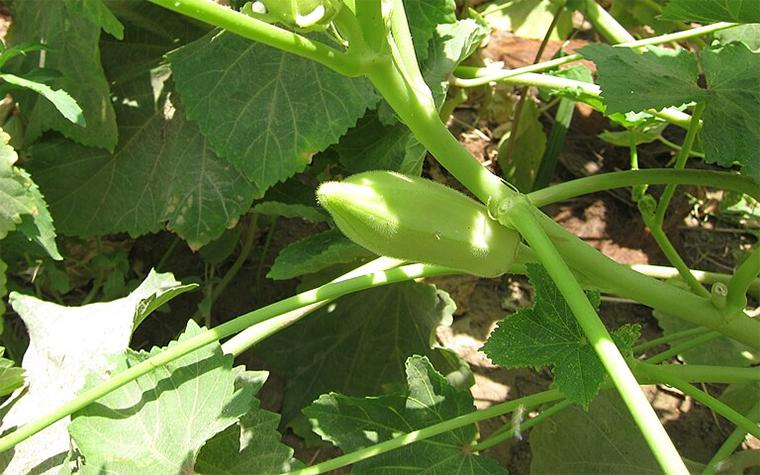Few are neutral about this unique-tasting vegetable.
COLUMBIA, Mo. – There are many gray areas in life. That’s not the case with people’s opinions about okra, said University of Missouri Extension horticulturist David Trinklein. People either love it or loathe it.
Okra lovers point toward its unique flavor and many uses. Okra haters can’t see how anyone can eat something so slimy, said Trinklein.
Also known as lady’s fingers, okra is a member of the Malvaceae plant family, which includes cotton, cacao and hibiscus.
Believed to be native to eastern Africa, okra was used in the 12th and 13th centuries by Egyptians, Spanish Moors and Persians. By the early 18th century, okra had made its way into what is now the southeastern U.S.
Okra is a tall warm-season vegetable that needs full sun and well-drained soil. Before planting, apply about 1 pound of a complete fertilizer, such as10-20-10, per 100 square feet of garden area. Additionally, apply two side-dressings of fertilizer at the rate of about 3 ounces per 100 feet of row when plants are 6-8 inches tall and again two to three weeks later.
Normally, okra is seeded into the garden after soils warm to slightly over 60 F. Since okra seeds have a hard coat, Trinklein recommends soaking them overnight in water to enhance germination.
Sow seeds at the rate of about 2 ounces per 100 feet in rows that are 36 to 48 inches apart. Cover seeds to a depth of about one-half inch. After seedlings are established, thin to about 12 inches between plants. Recommended varieties for Missouri include Annie Oakley II, Clemson spineless and Lee, a dwarf variety.
Okra tolerates drought but appreciates adequate moisture. During dry periods, apply 1-2 inches of water per week. Soaker hoses or drip irrigation systems work well for this purpose.
Weed control is important since okra occupies the garden for an extended period. Common pests include aphids, whiteflies, stink bugs, leafhoppers and caterpillars like corn earworms.
Root diseases associated with wet, cool soils are the biggest disease threats to okra. In southern Missouri, root knot nematode can cause trouble.
Trinklein suggests harvesting okra when seedpods are young, tender and fiber-free. For most varieties, this is when pods are about 2-4 inches long. Because of okra’s rapid growth, harvest on alternate days to prevent pods from becoming overly mature.
Adore it or despise it, okra is nutritious, Trinklein says. A one-half cup serving contains only 18 calories and is an excellent source of dietary fiber. Okra has significant amounts of vitamins C, A and K, calcium, iron, phosphorus, potassium, zinc, copper, folate and antioxidants.
Photo
Okra plant. Photo by Shijan Kaakkara via Wikimedia Commons. Shared under a Creative Commons license (CC-BY-SA 3.0).
